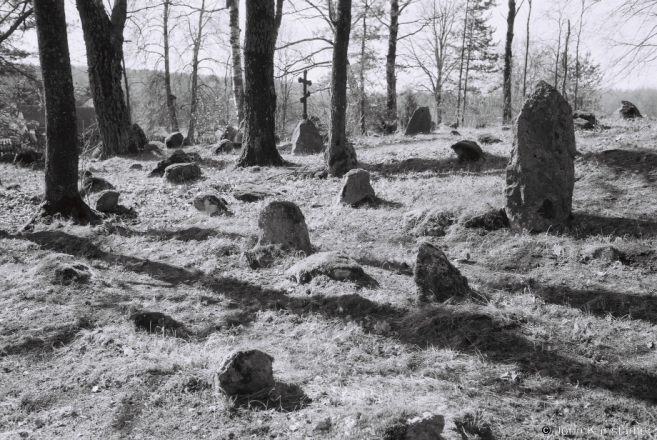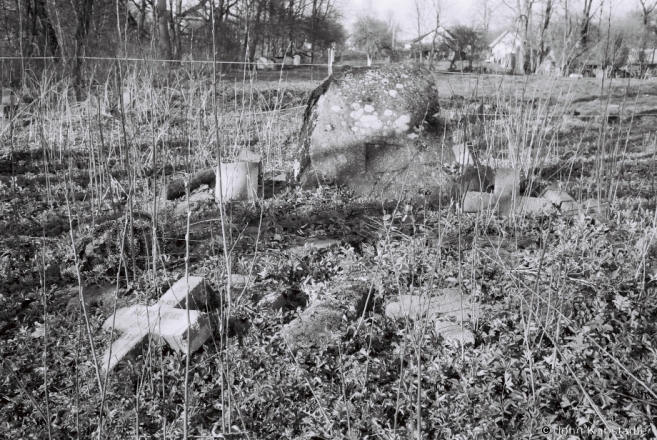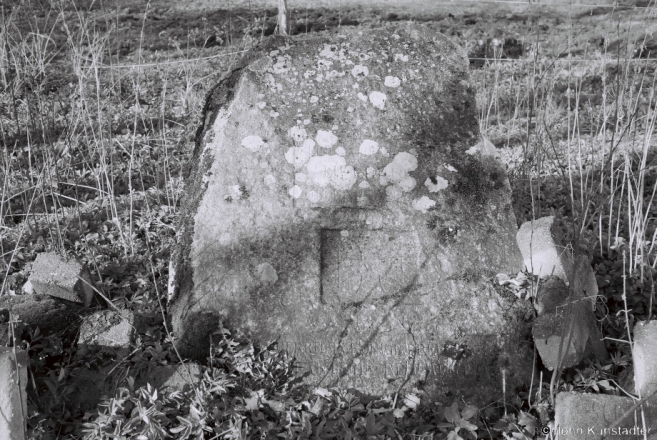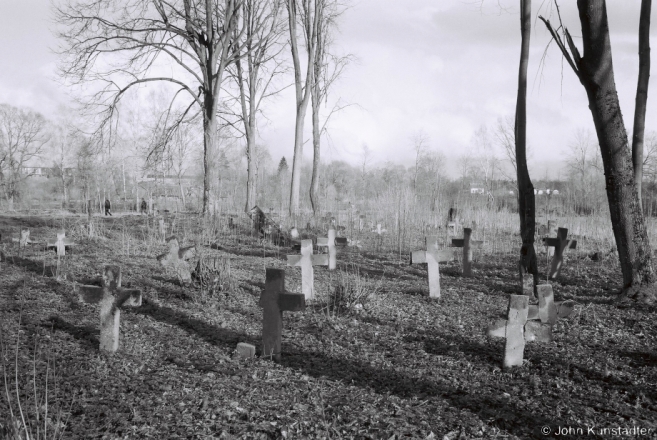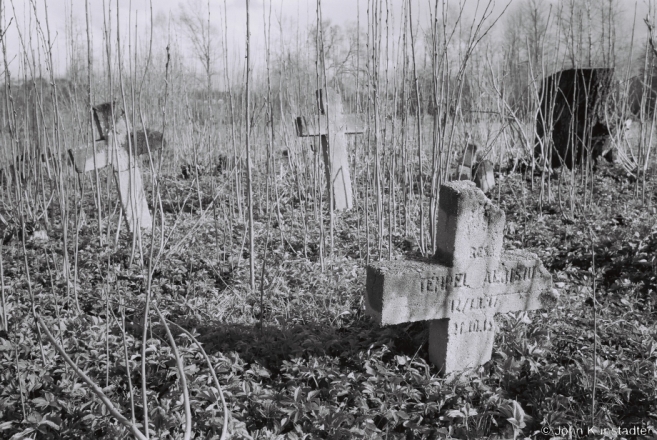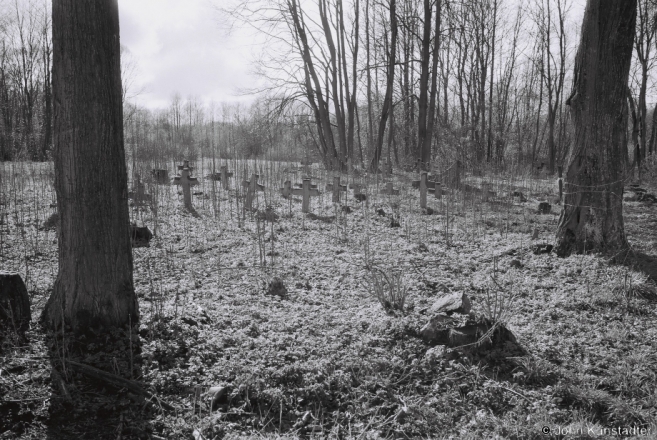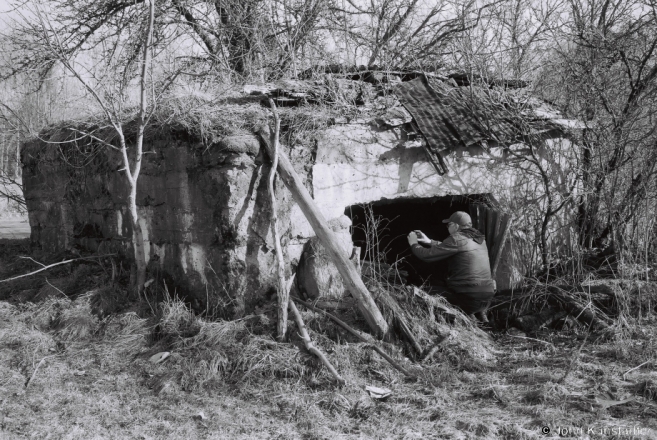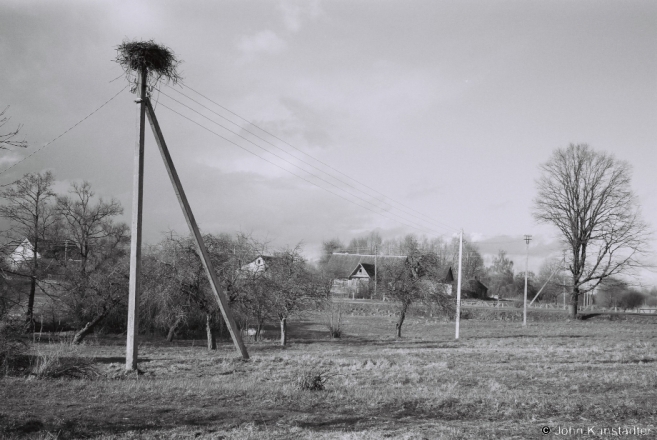April 2017 photo expedition to Vjaljejka, Mjadzjel and Pastavy Districts with Anton Astapovich, chairman of the Belarusian Association for the Preservation of Historic and Cultural Monuments (БДТАПГК) and regional historian and conservationist Andrej Matsur. Part III/IV: along the trace of the Eastern Front — German imperial army World War I fortifications and cemeteries in Pastavy District (Jareva, Sviljeli, Norkavichy, Dvarchany).
Фотавандроўка ў красавіку 2017 г. з Антонам Астаповічам, старшынёй Беларускага дабраахвотнага таварыства аховы помнікаў гісторыі й культуры (БДТАПГК) і пастаўскім краязнаўцам Андрэем Мацурам па спадчыне Вялейскага, Мядзедьскага й Пастаўскага раёнаў. Частка III/IV: па лініі Ўсходняга фронту — доты й могілкі нямецкай імперскай арміі ў Пастаўскім раёнае (Ярэва, Свілелі, Норкавічы, Дварчаны).
After World War I the German War Graves Commission (Volksbund Deutsche Kriegsgräberfürsorge — “Volksbund”) paid the government of the Second Polish Republic to look after German war cemeteries on Polish territory, which between 1921 and September 1939 included the western Belarusian lands. The Poles undertook careful exhumations and where necessary reburied soldiers’ remains under new tombstones in more than 150 cemeteries in the Belarusian lands. In some cases the remains were those of soldiers from the Russian imperial army; the Poles treated those remains with equal respect. During the interwar period, the Soviet regime showed no interest in honoring Russian imperial army graves in Poland. After occupying the western Belarusian lands when it invaded Poland together with Nazi Germany, the Soviet regime neglected all World War I cemeteries. Since the collapse of the Soviet empire, the Volksbund has again been active in helping put some larger German World War I cemeteries in Belarus in order; however, the Volksbund does not provide funding for the upkeep of smaller cemeteries such as here. It is thus up to local volunteers or organized preservation groups to keep the cemeteries in order.
World War I cemeteries (part XVI): Dvarchany.
One of two German cemeteries in Dvarchany, this long-neglected group of graves was cleaned up by local historians from Pastavy under the direction of Andrej Matsur. We did not have time to visit the second group of graves, located within the village cemetery.
Могілкі Першай сусьветнай вайны (частка XVI): Дварчаны.
Краязнаўцы з Пастаў на чале з Андрэем Мацурам прыбралі гэтыя на доўга занядбаныя магілы. Рам не хапала часу, каь наведваць другія нямецкія магілы на вясковых могілках.
German bunker.
Нямецкі ДОТ.
A final view of this tranquil village.
Апошні від на гэтую ціхую й ветлую вёску.
